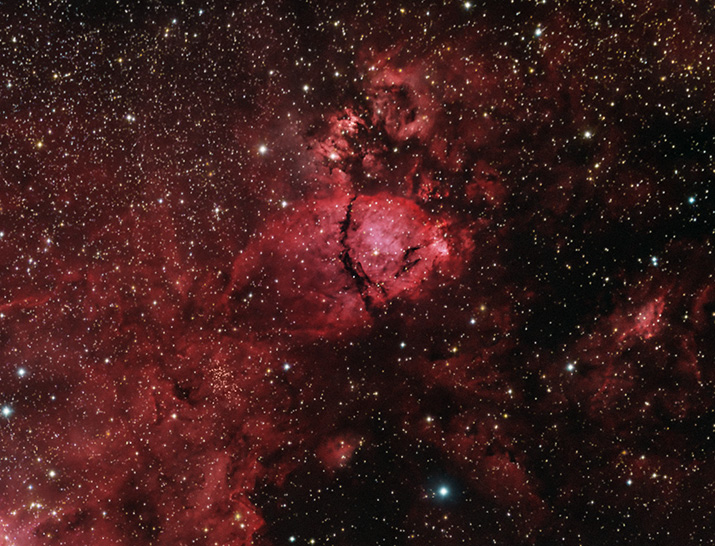
|
Date: Sept. 8, 2025 - Location: Dark Sky Observatory, Fort Davis, TX Telescope: Officina Stellare f/3 RH200-AT - Mount: Paramount MX - Camera: QSI-640 Exposure: Ha & OIII 11x5 min. each - R,G,B - 15x1 min. each - All binned 2x2 Click on the image below to view at higher resolution. |

|
IC 1795, also known as the Fish Head Nebula and the Northern Bear Nebula[1], is part of a huge star forming system of gas and dust located along the Perseus spiral arm of our Milky Way galaxy[1]. The nebula is located in the constellation Cassiopeia approximately 6000 light-years from the Earth and is adjacent to the much larger Heart Nebula[1,2]. The brightest portion of the Fish Head Nebula is listed as NGC 896 in the New General Catalogue[2]. NGC 896 is a relatively bright knot that appears on the western (right) side of IC 1795. It contains numerous young massive stars that emit high amounts of ultraviolet light. This UV radiation excites the surrounding gas and causes it shine predominantly in characteristic red light of ionized hydrogen. The above image was assembled from exposures made through Hydrogen Alpha (deep red) and Oxygen III (blue-green or teal) filters. These exposures were combined with Hydrogen Alpha mapped to the red channel and Oxygen III mapped to the green and blue channels. The stars were overlaid with data from a RGB filtered image. A Hubble Palette (SHO) filtered version of the Fish Head Nebula may be viewed here.
Member of the Dark Sky Observatory Collaborative
References
|